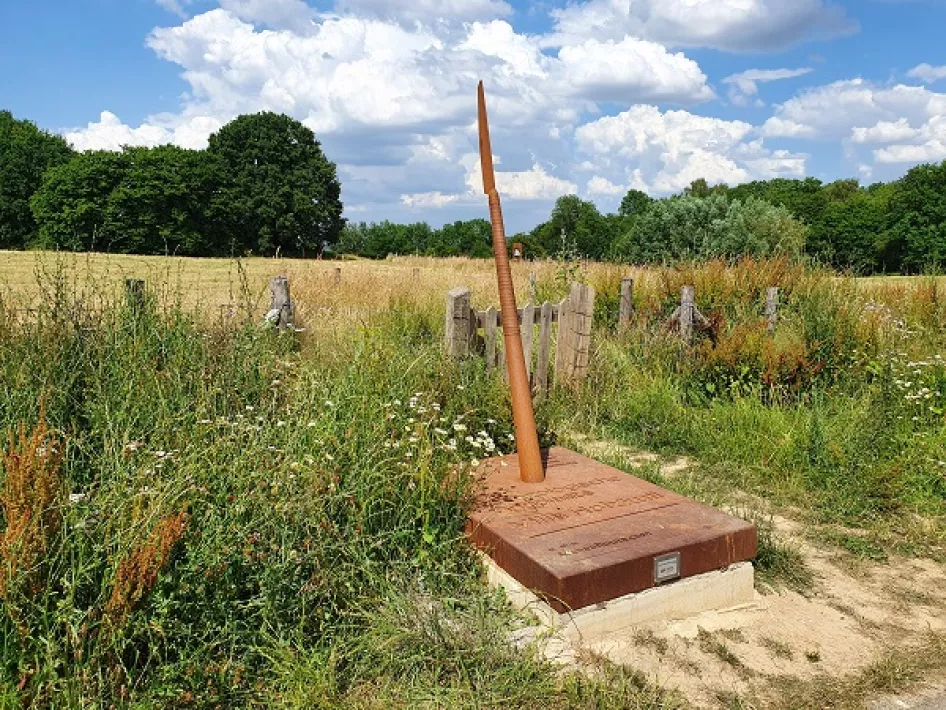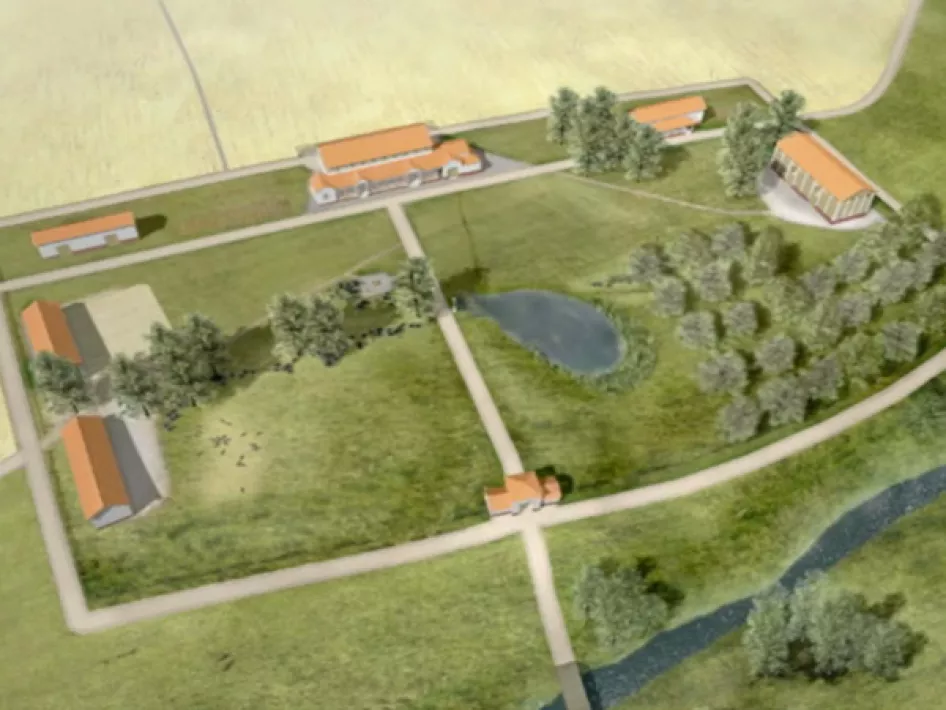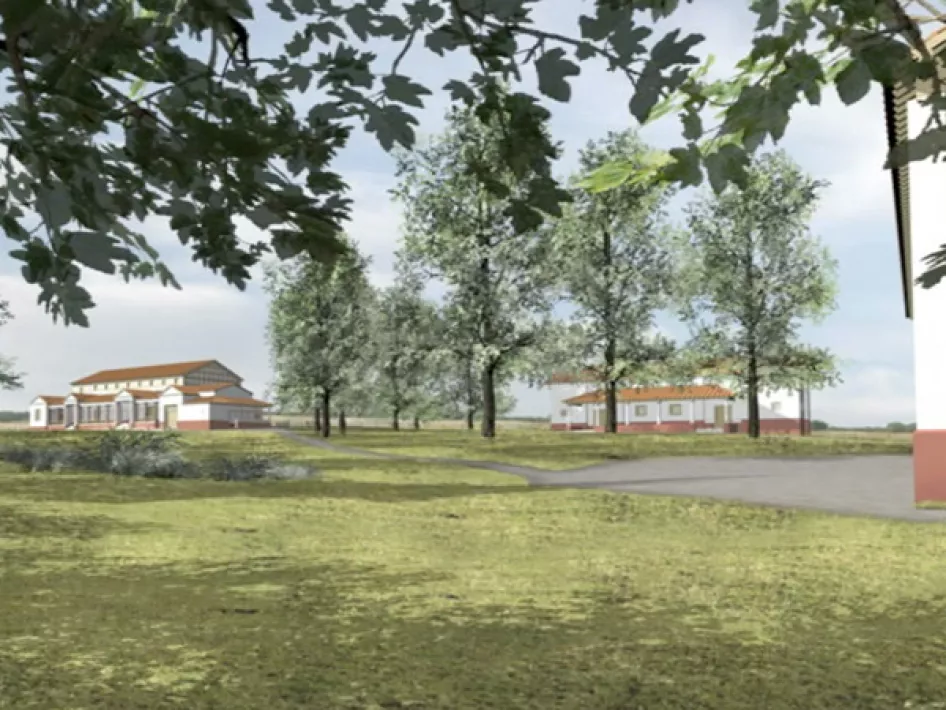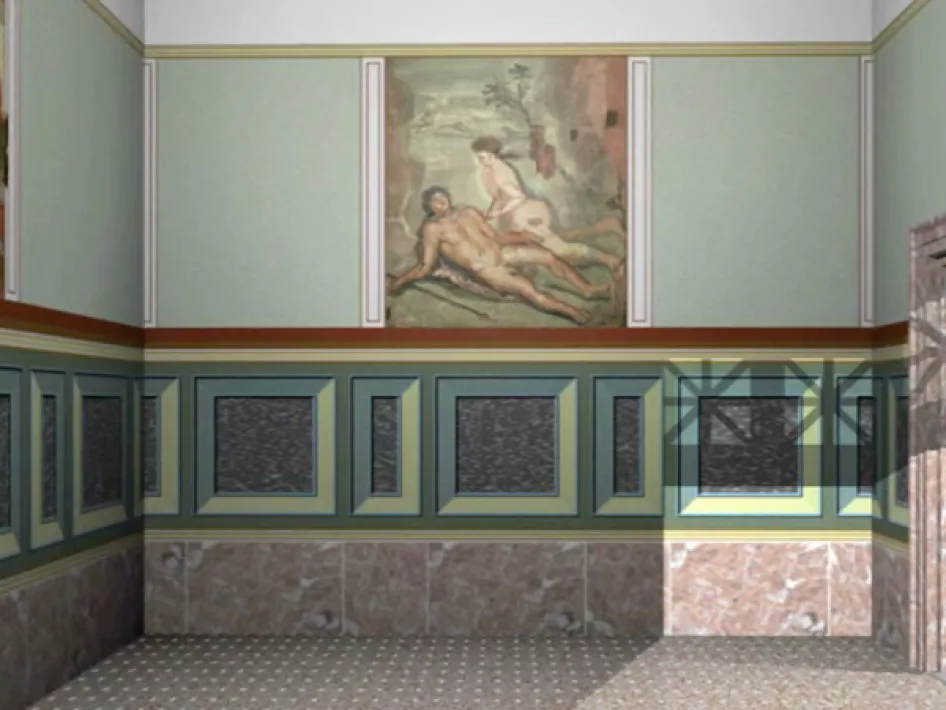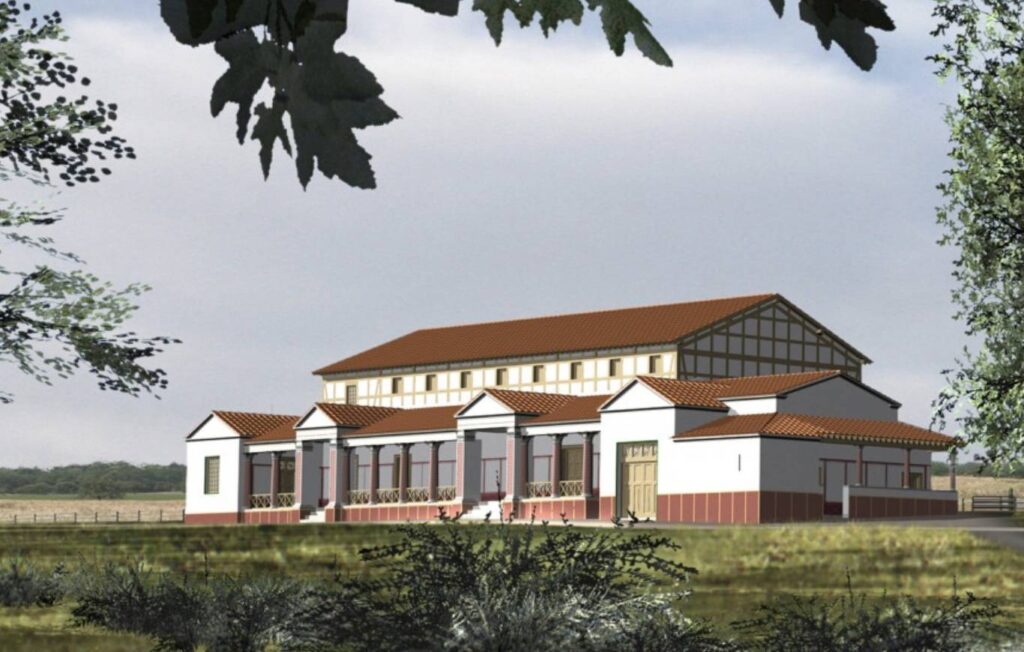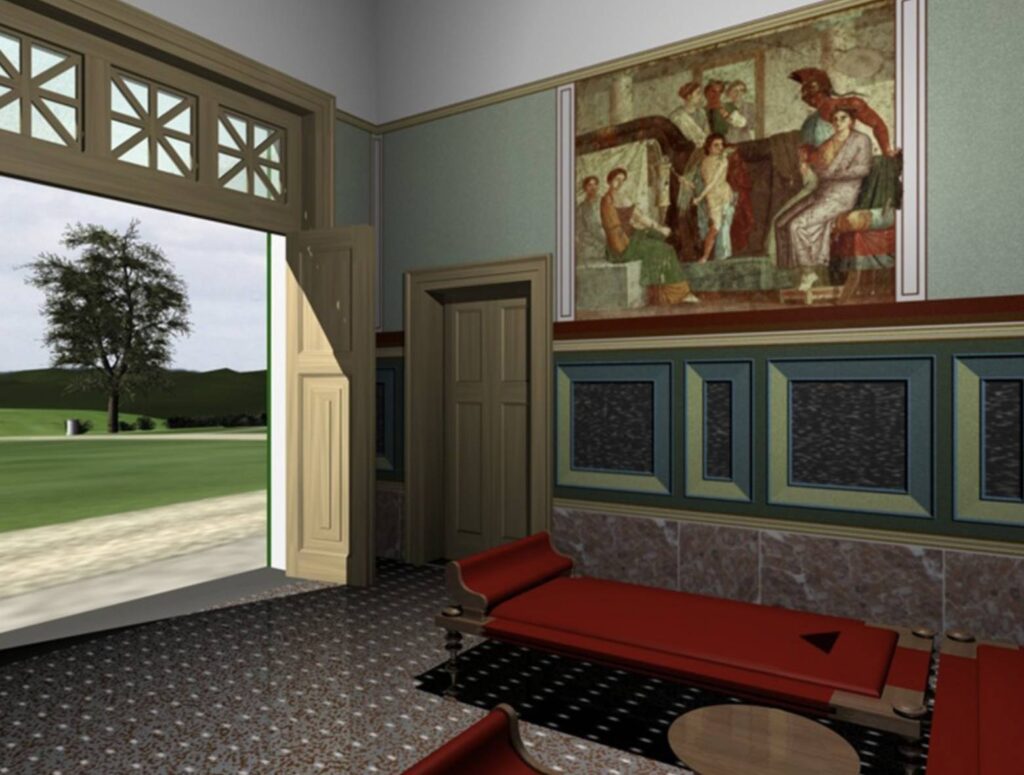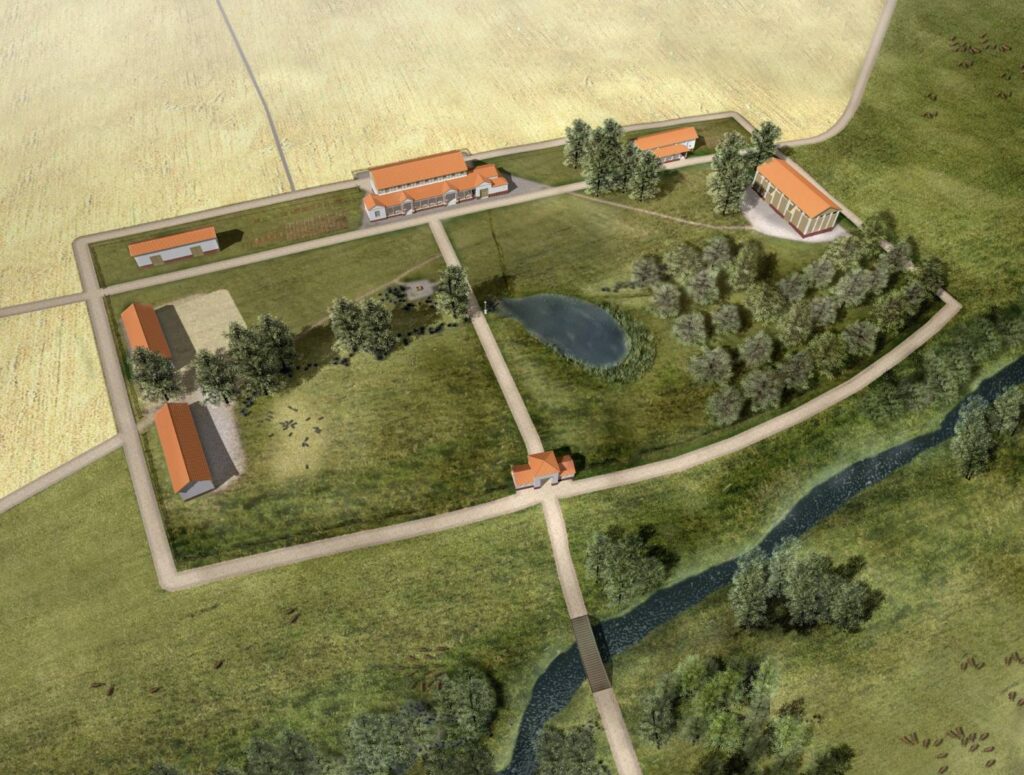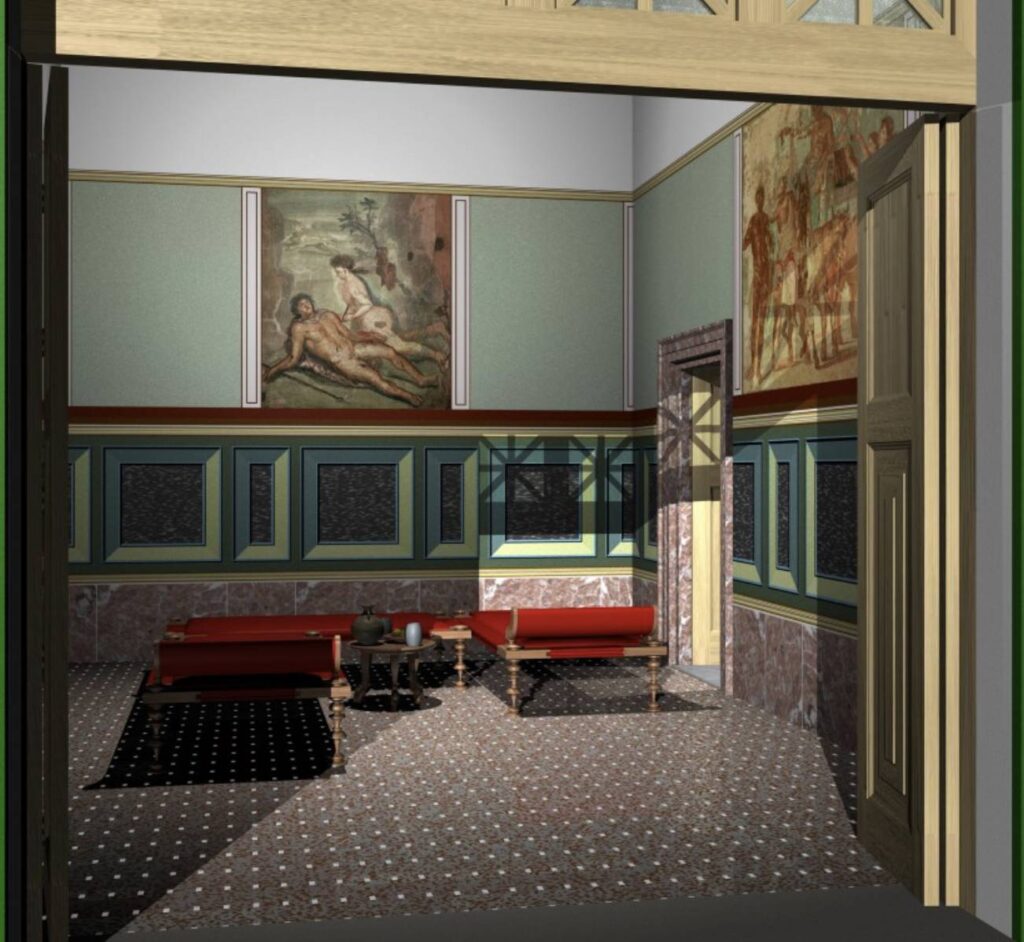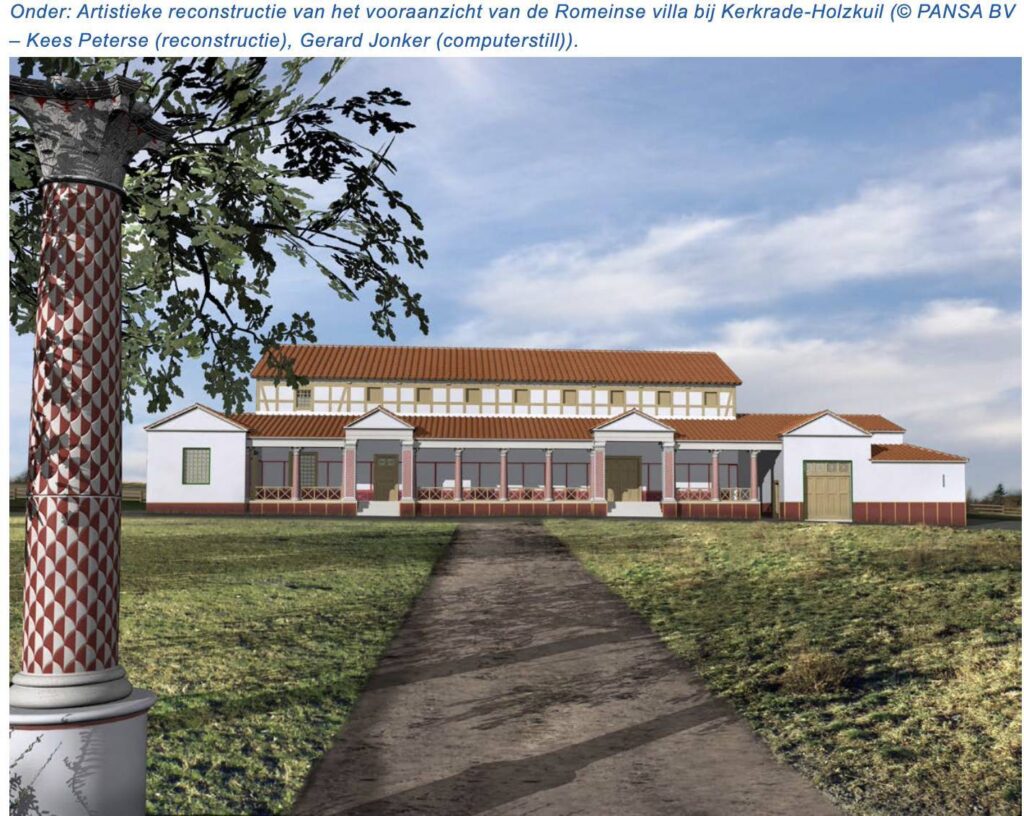Villa Holzkuil
Carisborg, Kerkrade
The best-researched Roman villa in the Netherlands lies safely hidden underground. A welcoming nature reserve protects its remains. As you walk, you will understand why the Romans, 2000 years ago, chose this place as one of their first settlements.
The excavation of Villa Holzkuil in 2002 was an archaeological adventure. For ten months, between four and fifteen archaeologists worked continuously on the site, together with many volunteers. Step by step, every section was meticulously examined for traces and finds. In the end, an area the size of nearly five football fields was investigated — a gigantic task that has given us an enormous wealth of knowledge today.
Villa Holzkuil was a classic villa rustica, a Roman country estate. The bathhouse and especially a small cellar have been well preserved, right down to a niche for a candleholder. The finds reflect luxury: expensive pottery (terra sigillata), cloak pins from Mainz, and a richly decorated golden button. In Roman times, life could be prosperous if you grew grain…
Would you like to experience Villa Holzkuil in virtual reality? Follow the Archeo Speer Route and download the app!
Want to know more about Limburg’s history and archaeology? Visit the Archeoroute website here.
Discover
- Take a walk through the Carisborg nature reserve
- Admire the wooden sculptures along the nature trail
- Enjoy the beautiful surroundings just like the Romans once did
Fun to know
- Digging belongs to the past
- In the past, everything had to be excavated centimeter by centimeter, but that is no longer necessary. At least, to determine the outlines, geophysical research already goes a long way. This means that, without digging, special equipment can measure (among other things) variations in soil density. In this way, you can get a clear picture of a possible structure. Archaeological remains are, after all, best preserved underground.
- South Limburg: the granary of the Romans
- The Romans quickly realized how fertile the loess soil in South Limburg was. They made grateful use of it for cultivating large amounts of spelt. On a smaller scale, other grains were also grown, such as emmer, wheat, millet, barley, rye, and oats. The grain was transported along the Via Belgica towards the Rhine. There, thousands of Roman soldiers were stationed to defend the borders of the Roman Empire. To feed all those hungry mouths, South Limburg became the granary.
- Columns and Symmetry
- Before the Romans ruled in South Limburg, the Celts lived in this region. They lived in huts made of loam and wood. The Romans took a different approach: they built houses from Kunrader stone, mortared together — an early form of concrete. Roofs were no longer made of thatch, but of ceramic roof tiles. They created many different rooms within a house, equipped with underfloor and wall heating. The interior walls were decorated with frescoes and sculptures. In terms of architecture, there were many southern influences: the Romans loved colonnades and symmetry. These elements can also be seen in Villa Holzkuil.
